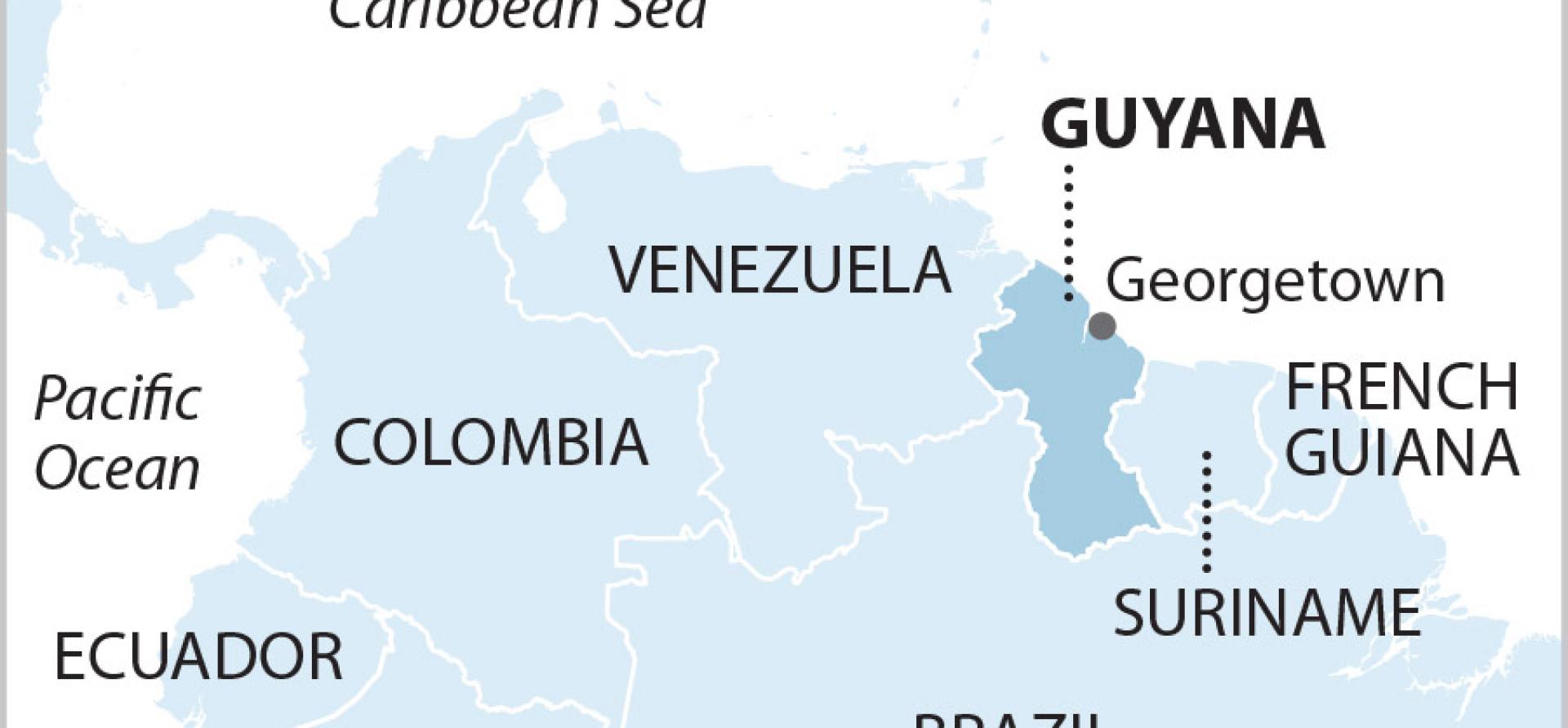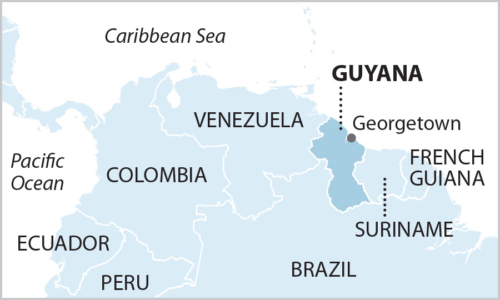IEEFA: Exxon-led consortium tramples on zero-gas flaring goals in Guyana

 When it comes to gas flaring, sometimes an agreement is not worth the paper on which it is written. ExxonMobil, Hess, CNOOC and the government of Guyana mutually consented in 2016 that flaring—disposing of natural gas by burning it in an open flame without technology to capture the emissions— would be prohibited from oil wells drilled pursuant to their offshore exploration and production agreements. What happened was something very different, and a court is now considering what to do about it.
When it comes to gas flaring, sometimes an agreement is not worth the paper on which it is written. ExxonMobil, Hess, CNOOC and the government of Guyana mutually consented in 2016 that flaring—disposing of natural gas by burning it in an open flame without technology to capture the emissions— would be prohibited from oil wells drilled pursuant to their offshore exploration and production agreements. What happened was something very different, and a court is now considering what to do about it.
ExxonMobil, as the project operator, invested in technology that purportedly would have allowed it to comply with the ambitious goal of zero flaring. If achieved, the project would have been precedent–setting. Accordingly, the preferred technology would have resulted in all of the gas being reinjected into the wells.
Since then, all parties have recognized that the technology is not resulting in zero flaring. The government of Guyana, however, is within its rights to halt production until the project complies with the zero-flaring goal.
At first, the parties agreed to continue production while ExxonMobil repaired or replaced the technology.
Now it seems the government of Guyana has granted significant concessions that undermine the flaring prohibition. There are new rules that permit flaring under special circumstances and these exceptions are quite generous.
The government has reported that 15.1 billion cubic feet of gas have been flared as of July 2021. If the target is “zero” then of course it is not being met. To date, ExxonMobil has paid only approximately $4.5 million in fines. If Guyana had adopted a policy that set fines to offset realistic costs, at $75 per ton for example, ExxonMobil should have paid something closer to $26 million, or six times the amount they have paid.
The project favors the Exxon-led consortium at the expense of Guyana’s fiscal outlook
The fine, like the project as a whole, is governed by a one-sided agreement that favors the Exxon-led consortium at the expense of Guyana’s annual budget and long-term fiscal outlook. This concession is just another in a long line of giveaways that save ExxonMobil money.
Meanwhile, the flaring continues so much so that they have changed the rules. The flaring fines have simply become a cost of doing business—a cost that is much more affordable for Exxon than fixing the problem.
PUBLIC INTEREST ADVOCATES HAVE BROUGHT LEGAL ACTION AGAINST THE OIL COMPANIES asking the court to compel the government of Guyana to enforce the law and either have the problem rectified or production shut down. The complaint also challenges the authority and rationale for the new flaring permit concessions.
The plaintiffs also raise a series of transparency issues that relate to flaring from the Liza wells. They seek data and explanations on oil and gas production, greenhouse gas and pollutant emissions levels, maintenance operations and the exact amount of fines collected to date.
We would add a few more questions to the list.
At the top: Do the economics of the off-shore drilling project in Guyana depend on flaring, and the pollution it causes? If ExxonMobil is forced to comply with the flaring prohibition, does the project fail?
If ExxonMobil is forced to comply with the flaring prohibition, does the project fail?
Given the contract terms ExxonMobil and its partners can extract sufficient return from Guyana’s oil production to enable it to comply with Guyanese statutes, regulatory and contract provisions. What has changed so fundamentally that the government now feels compelled to accede to the company’s demands that allow them to pollute the air?
- What companies and technologies are being used to achieve the capture and re-injection of the gas?
- Did all of the parties approve the companies and technologies before including them into the project design?
- What certifications have been provided to Guyana’s government regarding the performance of the emissions control systems involved?
- Why has it taken over a year to get the technology to function properly?
- What parties to the contract are absorbing the costs needed to repair and/or replace the equipment that requires additional investment?
- Was the Guyanese government made aware of the likelihood that the plant operator would need to routinely flare?
Now, of course ExxonMobil must answer the age-old question: What did the corporation know about the ability of the project and its relevant technology to achieve zero flaring when they signed the contract and agreed to the zero flaring provisions?
AND, WHEN DID EXXONMOBIL LEARN THEAT THEY WOULD NOT BE ABLE TO ACHIEVE the goal, and that substantial contract and/or permit modifications would be required to allow gas flaring? Has ExxonMobil properly maintained the emissions equipment monitoring functions prior to operation and during operations, and has the corporation reported this information fully and regularly to Guyanese officials?
- The May 2017 Environmental Impact Assessment (EIA) for the project states that Greenhouse Gas Emissions (GHG) were estimated. The EIA offers an aggregate estimate of GHG from all sources. For other pollutants (sulfur, nitrogen and particulates) however, the EIA identifies the sources of pollution and specifies the amount of pollution created by those sources, including flaring. The document dated May 2017 was submitted to Guyanese officials. Did ExxonMobil concur with the EIA’s assessment that the flaring from the project would produce no greenhouse gases (CO2)?
- Before or after the contract signing, permit issuance or EIA finalization, did any of the parties to the contract prepare or have prepared or have knowledge of any third-party emissions assessments made by independent experts? Did those third-party estimates corroborate the assessments from the environmental impact statement?
The litigation is likely to require that ExxonMobil and the government of Guyana answer some questions about flaring. This, however is no way to encourage public participation in a project with such enormous importance for Guyana and its residents. When full disclosures occur, and it will likely reveal that Guyana was once again given the bad end of the deal overall public confidence in all parties to the agreements will be damaged.
Tom Sanzillo ([email protected]) is IEEFA’s director of financial analysis.
Related items
IEEFA: Guyanese oil deal tax incentives raise income reporting concerns
IEEFA: ExxonMobil contract leaves Guyana out of oil gains
IEEFA report: Oil consortium deal with Guyana far from panacea for country’s ailing finances














